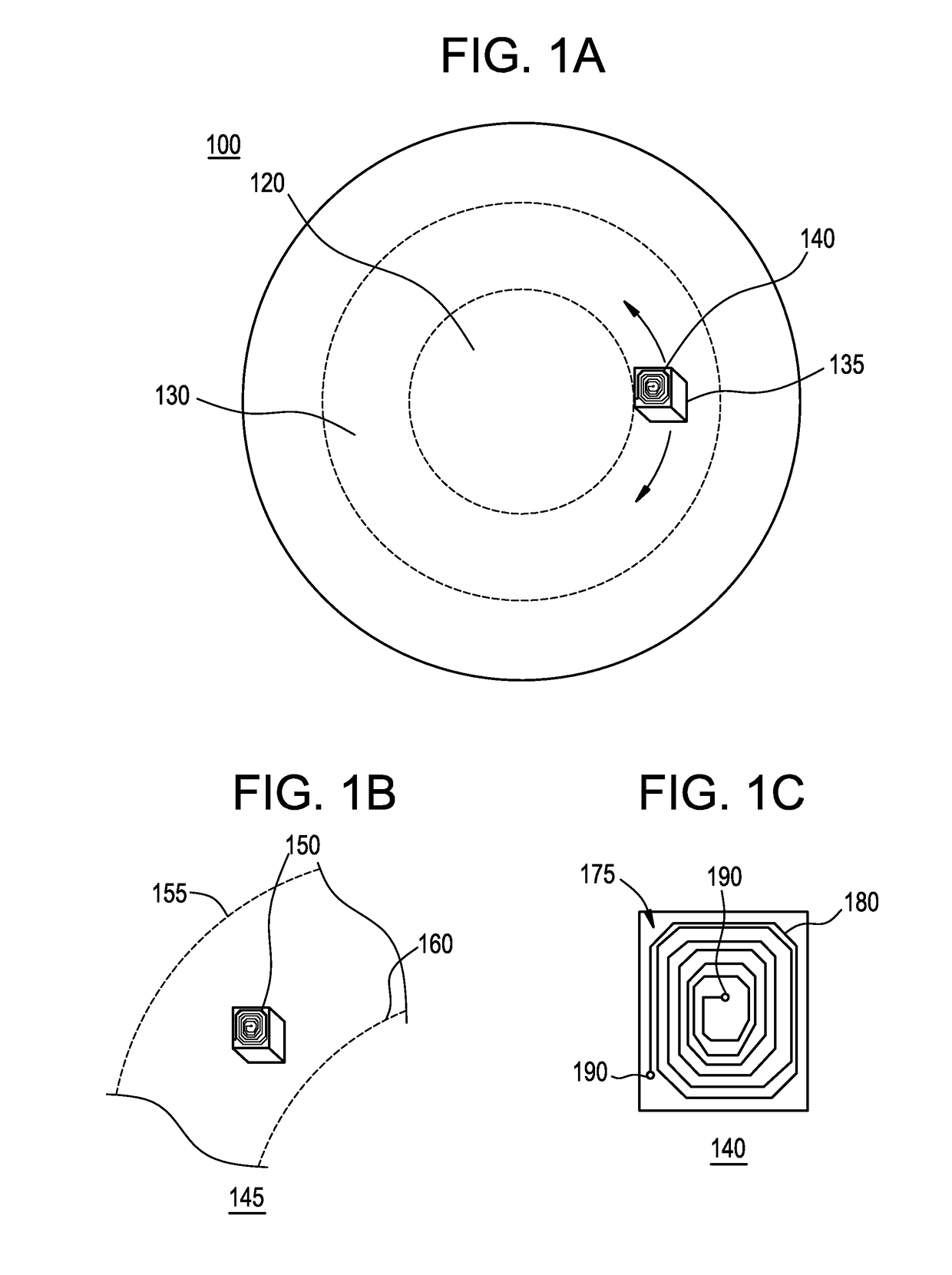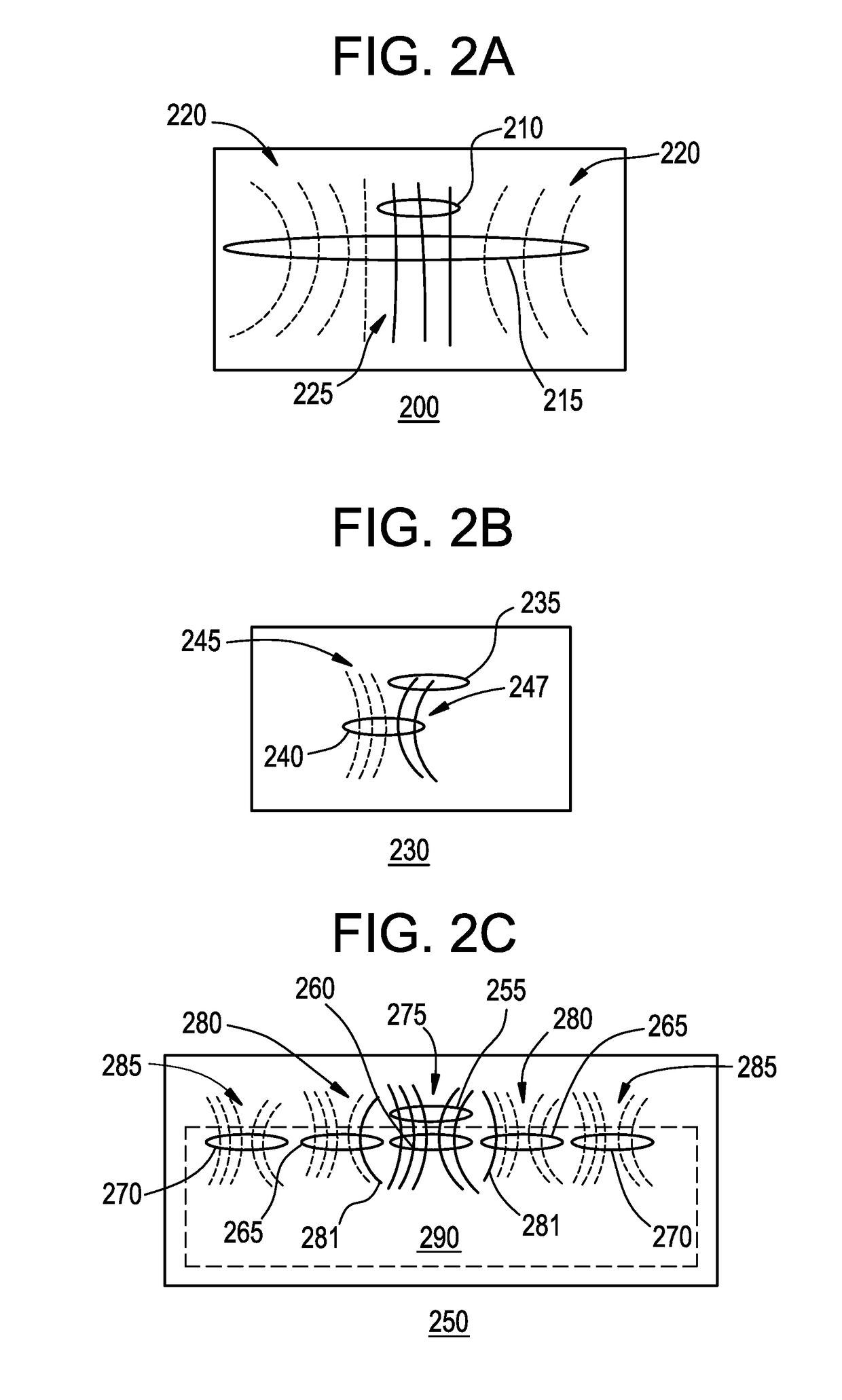Antenna mandrel with multiple antennas
a mandrel and antenna technology, applied in the field of ophthalmic devices, can solve the problems of excessive electromagnetic field exposure, high voltage on the electrodes required to transmit significant power, and becoming increasingly more likely to create wearable or embeddable microelectronic devices, etc., and achieve the effect of quick and convenien
- Summary
- Abstract
- Description
- Claims
- Application Information
AI Technical Summary
Benefits of technology
Problems solved by technology
Method used
Image
Examples
Embodiment Construction
[0033]Referring to FIG. 1A, there is illustrated a first exemplary embodiment of an ophthalmic device 100. Although illustrated as a contact lens, it is important to note that the present invention may be utilized in conjunction with any number of devices having medical and ophthalmic applications as well as any devices incorporating lenses, such as cameras, binoculars and microscopes. The exemplary ophthalmic device 100 comprises a circuit element 135 with built-in submillimeter-sized antenna 140 positioned outside of the optic zone 120 in the peripheral zone 130. As utilized herein, the circuit element 135 may comprise one or more electric components embedded on any suitable substrate, including copper traces on a polyimide, aluminum or copper on silicon oxide or silicon nitride, or other conductors on insulators. Circuit element 135 may be configured with the necessary electrical components to execute any number of applications for the ophthalmic device. The antenna 140 may be fo...
PUM
 Login to View More
Login to View More Abstract
Description
Claims
Application Information
 Login to View More
Login to View More - R&D
- Intellectual Property
- Life Sciences
- Materials
- Tech Scout
- Unparalleled Data Quality
- Higher Quality Content
- 60% Fewer Hallucinations
Browse by: Latest US Patents, China's latest patents, Technical Efficacy Thesaurus, Application Domain, Technology Topic, Popular Technical Reports.
© 2025 PatSnap. All rights reserved.Legal|Privacy policy|Modern Slavery Act Transparency Statement|Sitemap|About US| Contact US: help@patsnap.com



